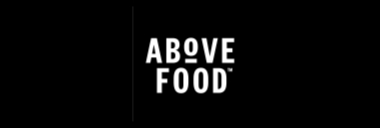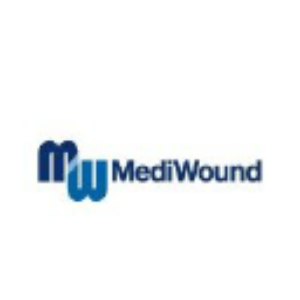MediWound Announces Publication of Phase II EscharEx® Data Demonstrating Superiority Over Collagenase in Venous Leg Ulcers
Rhea-AI Summary
MediWound (NASDAQ: MDWD) published a post hoc analysis in Wounds journal comparing their EscharEx® treatment to SANTYL® for venous leg ulcers (VLUs). The analysis, based on Phase II ChronEx trial data, demonstrated superior clinical performance of EscharEx over SANTYL, the only FDA-cleared enzymatic debridement agent currently available.
Key findings showed that 63% of EscharEx patients achieved complete debridement at 2 weeks versus 0% in the SANTYL group. The median time to debridement was 9 days for EscharEx, while SANTYL did not achieve this milestone. Wound Bed Preparation was achieved by 50% of EscharEx patients in 2 weeks compared to 0% with SANTYL. Notably, wound closure rates were 33% for EscharEx versus 25% for SANTYL, with significantly faster mean time to closure (48 days vs. 76 days). Both treatments showed similar safety profiles, though deep wound infection rates were lower in the EscharEx group (11% vs. 38%).
Positive
- EscharEx achieved 63% complete debridement rate at 2 weeks vs 0% for SANTYL
- Faster median time to debridement (9 days for EscharEx vs not achieved for SANTYL)
- Higher wound bed preparation success rate (78% vs 38% over 12 weeks)
- Faster mean time to wound closure (48 days vs 76 days)
- Lower deep wound infection rate (11% vs 38%)
Negative
- Small sample size in SANTYL group (n=8) compared to EscharEx group (n=46)
- Wound closure rate difference was not statistically significant (33% vs 25%)
Insights
MediWound's EscharEx outperformed SANTYL in Phase II trial, showing faster debridement, better wound preparation, and comparable safety in venous leg ulcers.
The publication of MediWound's Phase II ChronEx trial in Wounds journal demonstrates significant clinical advantages of EscharEx® over SANTYL® (collagenase ointment) in treating venous leg ulcers (VLUs). The post hoc analysis compared 46 EscharEx patients with 8 SANTYL patients, revealing striking performance differences.
The most compelling evidence lies in debridement efficacy, where EscharEx achieved
Particularly noteworthy is wound bed preparation (WBP), a critical precursor to healing defined as complete debridement plus complete granulation. EscharEx achieved
While wound closure rates weren't statistically different (
These results suggest EscharEx's bromelain-based formulation may provide a substantial advancement over the only current FDA-cleared enzymatic debridement agent for dermal ulcers. The data indicates potential for improved clinical outcomes and possibly reduced treatment duration for the millions suffering from chronic VLUs.
Post hoc analysis published in the peer-reviewed journal Wounds highlights EscharEx®’s superior clinical performance and comparable safety profile to SANTYL®
YAVNE, Israel, May 13, 2025 (GLOBE NEWSWIRE) -- MediWound Ltd. (Nasdaq: MDWD), a global leader in next-generation enzymatic therapeutics for tissue repair, today announced the publication of a peer-reviewed post hoc analysis in Wounds. The analysis is based on data from the Company’s Phase II ChronEx clinical trial in patients with venous leg ulcers (VLUs) evaluating the efficacy and safety of EscharEx® compared with collagenase ointment (SANTYL®), the only FDA-cleared enzymatic debridement agent commercially available for the treatment of dermal ulcers.
The article, titled “Bromelain-Based Debridement Versus Collagenase Ointment Debridement of Venous Leg Ulcers: Post Hoc Analysis of the ChronEx Trial,” appears in the April 2025 edition of Wounds (Index 2025;37(4):166–173) and compares outcomes in a subgroup of patients from the non-surgical standard of care arm treated with SANTYL (n=8) to those treated with EscharEx (n=46).
“These new findings are consistent with my prior experience using EscharEx in clinical trials and SANTYL in clinical practice,” said Dr. Cyaandi Dove, DPM, of the University of Texas Health Science Center at San Antonio and co-author of the publication. “Compared to SANTYL, EscharEx achieved faster and more effective debridement and promoted healthier granulation tissue, both key to optimal wound bed preparation. EscharEx’s enzymatic formulation targets a wider range of non-viable and necrotic tissue, which may account for the favorable clinical outcomes observed.”
Key findings from the post hoc analysis include:
- Debridement Efficacy:
- Complete debridement at 2 weeks was achieved in
63% of EscharEx-treated patients, compared to0% in the SANTYL group (p = 0.001). - Median time to debridement was 9 days for EscharEx vs. not achieved for SANTYL (p = 0.023).
- Complete debridement at 2 weeks was achieved in
- Wound Bed Preparation (WBP):
- WBP—defined as complete debridement and complete granulation—was achieved by
50% of EscharEx patients in 2 weeks vs.0% with SANTYL (p = 0.015). - Over the entire study period (12 weeks),
78% of EscharEx patients achieved WBP vs.38% with SANTYL (p = 0.03). - Median time to WBP: 11 days for EscharEx; not achieved for SANTYL (p = 0.014).
- WBP—defined as complete debridement and complete granulation—was achieved by
- Wound Closure:
- Closure was achieved in
33% of EscharEx patients vs.25% with SANTYL (not statistically significant). - Among those who closed, the mean time to closure was 48 days for EscharEx vs. 76 days with SANTYL (p = 0.05).
- Closure was achieved in
- Safety and Tolerability:
- Adverse event rates and applicational pain were similar between groups.
- Deep wound infection, assessed using recognized clinical criteria, occurred in
11% of EscharEx patients compared to38% in the SANTYL group.
About EscharEx®
EscharEx® is a bromelain-based, bioactive enzymatic therapy in advanced clinical development for the debridement of chronic and hard-to-heal wounds. Designed for topical, once-daily application, EscharEx has demonstrated a favorable safety profile and effective wound bed preparation in multiple Phase II trials. The therapy has shown the ability to remove non-viable tissue, promote granulation tissue, and reduce bioburden and biofilm. A global Phase III study in venous leg ulcers (VLUs) is currently underway, with a clinical study in diabetic foot ulcers (DFUs) in preparation. EscharEx has shown clinical advantages over the leading enzymatic debridement product and targets a substantial global market opportunity.
About MediWound Ltd.
MediWound Ltd. (Nasdaq: MDWD) is a global biotechnology company focused on developing and commercializing enzymatic therapies for non-surgical tissue repair. The company’s FDA-approved biologic, NexoBrid®, is indicated for the enzymatic removal of eschar in thermal burns and is marketed in the U.S., European Union, Japan, and other international markets. MediWound is also advancing EscharEx®, a late-stage investigational therapy for the debridement of chronic wounds. EscharEx has demonstrated clinical advantages over the leading enzymatic debridement product and targets a substantial global market opportunity.
For more information, visit www.mediwound.com and follow us on LinkedIn.
Cautionary Note Regarding Forward-Looking Statements
MediWound cautions you that all statements other than statements of historical fact included in this press release that address activities, events, or developments that we expect, believe, or anticipate will or may occur in the future are forward-looking statements. Although we believe that we have a reasonable basis for the forward-looking statements contained herein, they are based on current expectations about future events affecting us and are subject to risks, assumptions, uncertainties, and factors, all of which are difficult to predict and many of which are beyond our control. Actual results may differ materially from those expressed or implied by the forward-looking statements in this press release. These statements are often, but are not always, made through the use of words or phrases such as “anticipates,” “intends,” “estimates,” “plans,” “expects,” “continues,” “believe,” “guidance,” “outlook,” “target,” “future,” “potential,” “goals” and similar words or phrases, or future or conditional verbs such as “will,” “would,” “should,” “could,” “may,” or similar expressions.
Specifically, this press release contains forward-looking statements concerning the anticipated progress, development, study design, expected data timing, objectives anticipated timelines, expectations and commercial potential of our products and product candidates, including EscharEx®. Among the factors that may cause results to be materially different from those stated herein are the inherent uncertainties associated with the uncertain, lengthy and expensive nature of the product development process; the timing and conduct of our studies of our products and product candidates, including the timing, progress and results of current and future clinical studies, and our research and development programs; the approval of regulatory submission by the FDA, the European Medicines Agency or by any other regulatory authority, our ability to obtain marketing approval of our products and product candidates in the U.S. or other markets; the clinical utility, potential advantages and timing or likelihood of regulatory filings and approvals of our products and products; our expectations regarding future growth, including our ability to develop new products; market acceptance of our products and product candidates; our ability to maintain adequate protection of our intellectual property; competition risks; the need for additional financing; the impact of government laws and regulations and the impact of the current global macroeconomic climate on our ability to source supplies for our operations or our ability or capacity to manufacture, sell and support the use of our products and product candidates in the future.
These and other significant factors are discussed in greater detail in MediWound’s annual report on Form 20-F for the year ended December 31, 2024, filed with the Securities and Exchange Commission (“SEC”) on March 19, 2025 and Quarterly Reports on Form 6-K and other filings with the SEC from time-to-time. These forward-looking statements reflect MediWound’s current views as of the date hereof and MediWound undertakes, and specifically disclaims, any obligation to update any of these forward-looking statements to reflect a change in their respective views or events or circumstances that occur after the date of this release except as required by law.
| MediWound Contacts: Hani Luxenburg Chief Financial Officer MediWound Ltd. ir@mediwound.com | Daniel Ferry Managing Director LifeSci Advisors, LLC daniel@lifesciadvisors.com |
Media Contact: Ellie Hanson FINN Partners for MediWound ellie.hanson@finnpartners.com 929-588-2008 |









